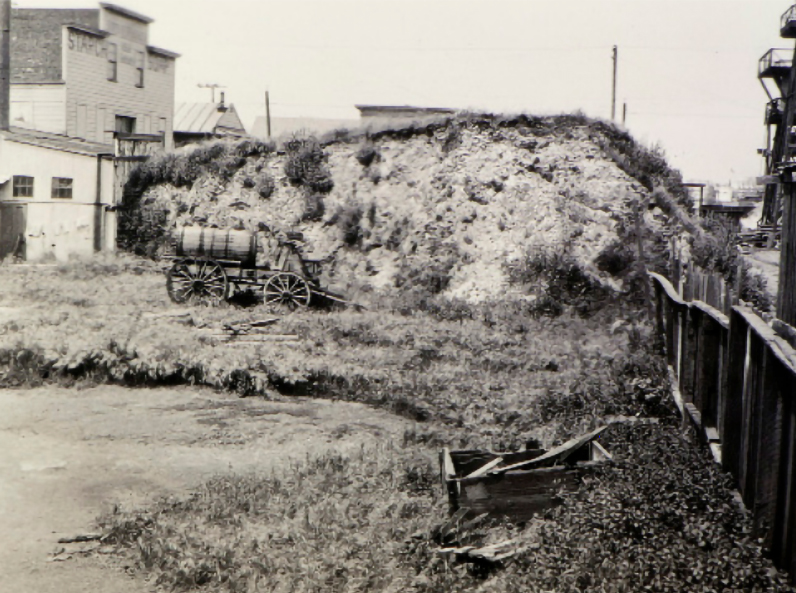BERKELEY, Calif. – Like many earth-based spiritual traditions, indigenous cultures have maintained living links with the spirits of ancestors and of the land. Keeping those links is part of the resilience and resistance against spiritual and cultural domination. The West Berkeley Shell Mound provides an example of one such act of resistance.
On October 21, 2019, an Alameda County Superior Court Judge, Frank Roesch, ruled against the developers in the case of the West Berkeley Shell Mound. This ruling hinged on Berkeley’s 2003 designation of the site as a historical landmark. As of press time, the lawyers for the developers have made no decision about a possible appeal.
The Ohlone people have been fighting developers since 2015. In those years, this site has become a public center for Ohlone cultural and spiritual expression. To the property owners, it’s a parking lot that could bring them more profit. To the Ohlone, it’s a 5,000-year-old ancestral cemetery. It contains the remains of their first village on the shores of today’s San Francisco Bay. The Ohlone have proposed developing this site as a cultural and educational park.
According to the Sacred Land website, the Ohlone called this site, Huichin. It contained both dwellings and the West Berkeley Shell Mound. Over time, the shell mound grew to be 30 feet tall. The Ohlone would light ceremonial fires at the top of the mound. Other Ohlone villages could see these ceremonial fires and they became a way to communicate.

West Berkeley Ohlone Shell Mound as photographed by Nels C. Nelson in 1907. [Public domain]
The Sacred Land Film Project has also produced a video about this site. In the early parts of that video, it shows parts of a spring equinox ceremony at the site. Later in that video, Corrina Gould, an Ohlone champion, spoke about what the West Berkeley Shell Mound means today. Gould said the West Berkeley Shell Mound “has done this amazing thing. All these people from all walks of life are coming together to try and preserve and protect it.” She said that all these people “pray together in ceremony and song and bring their own ceremonies. It’s become a place where people understand their connection to this land and what the relationship should be with the first people of this land.”
Gould stressed that no one at the West Berkeley Shell Mound was pushing people outside. Rather, they were bringing people inside to figure this out together. According to Gould, “We are creating something way bigger than ourselves.” She described reopening a buried creek that had provided freshwater to Huichin. “Water should always flow free.” Gould felt that it would be good for humans and the water “to allow children to laugh and play in water, to open [that creek] up.” She continued, when the creek is open to the air, people can “sing the water again, the way it should be sung. Water is alive.“
Gould felt that the process of taking back the West Berkeley Shell Mound site has allowed “us to put our feet on the ground and to dance the way we’re supposed to dance. [It’s] an amazing thing for 200 years we haven’t been able to that in our own territory.”
According to Gould, the proposed Ohlone cultural park would show people what these Ohlone shell mounds looked like. She said that no place currently exists to show the people of today who the Ohlone are. “Berkeley could be the first place” to do so, she continued. “I think that people are putting strong prayers down that Berkeley will be that first place. We want to help Berkeley be that place. It was the first place that my ancestors put that village. So it should be the first place that stands up for those ancestors as well.”
In February 2019, Berkeley began to replace damaged or missing street signs with new signs. Those new signs recognized that Berkeley lies in Ohlone territory.
Burial ceremonies involved the shell mound. While Gould did not disclose the actual burial ceremony, she did discuss Ohlone beliefs about that transition. According to Gould, the Ohlone had a four-day rite of passage when someone died. During these four days, the spirit of the deceased would go to an island in the San Francisco Bay to rest. Today, people call that island Alcatraz. After four days, the spirits would leave through the Western Gate. Today, people call the Western Gate, the Golden Gate.
The Wild Hunt is not responsible for links to external content.
To join a conversation on this post:
Visit our The Wild Hunt subreddit! Point your favorite browser to https://www.reddit.com/r/The_Wild_Hunt_News/, then click “JOIN”. Make sure to click the bell, too, to be notified of new articles posted to our subreddit.